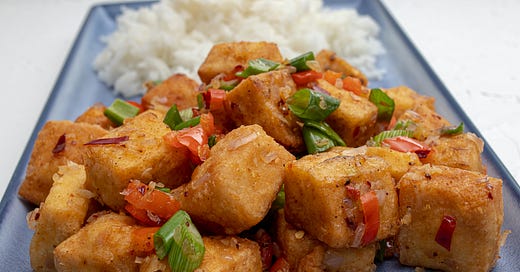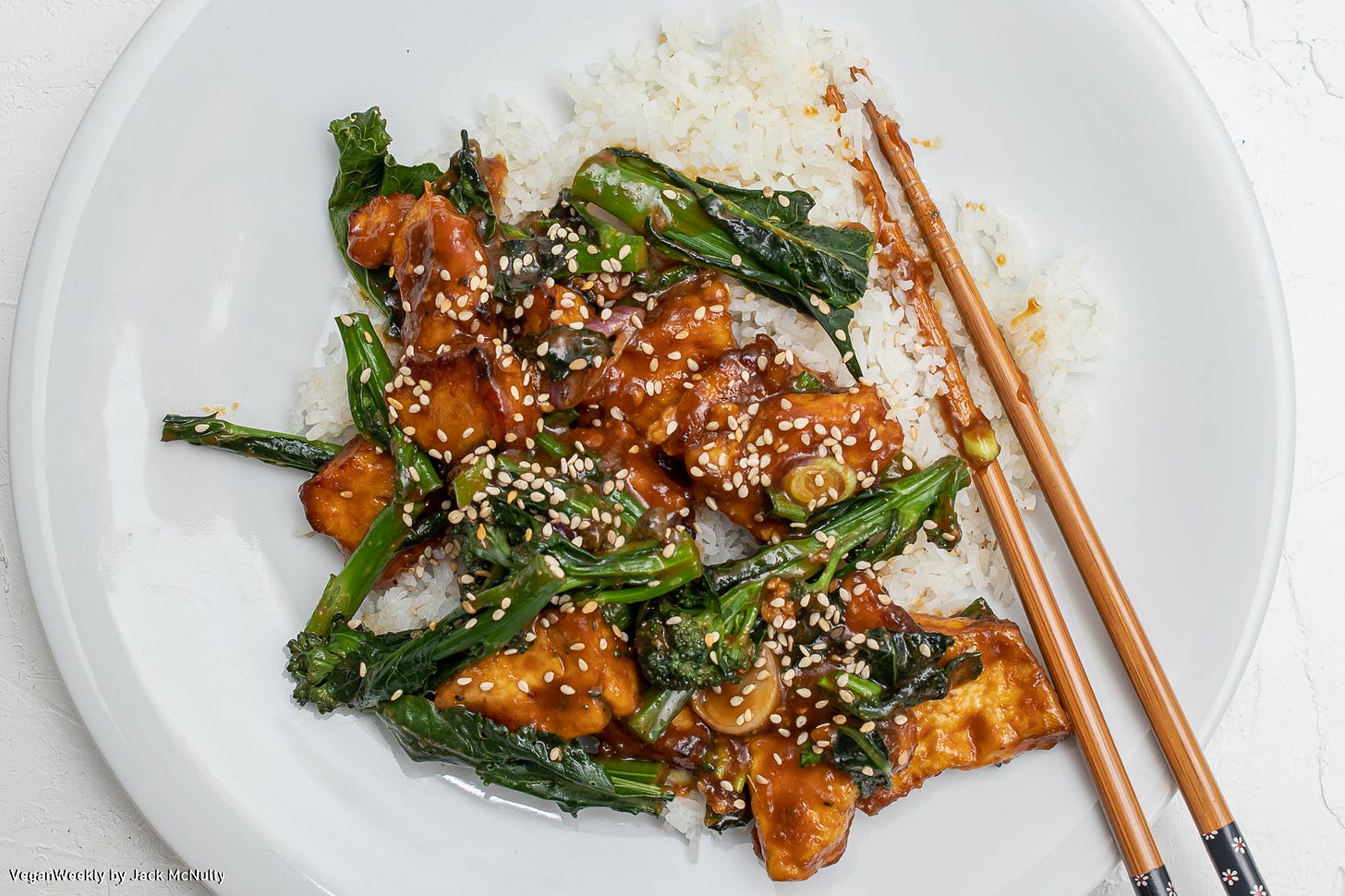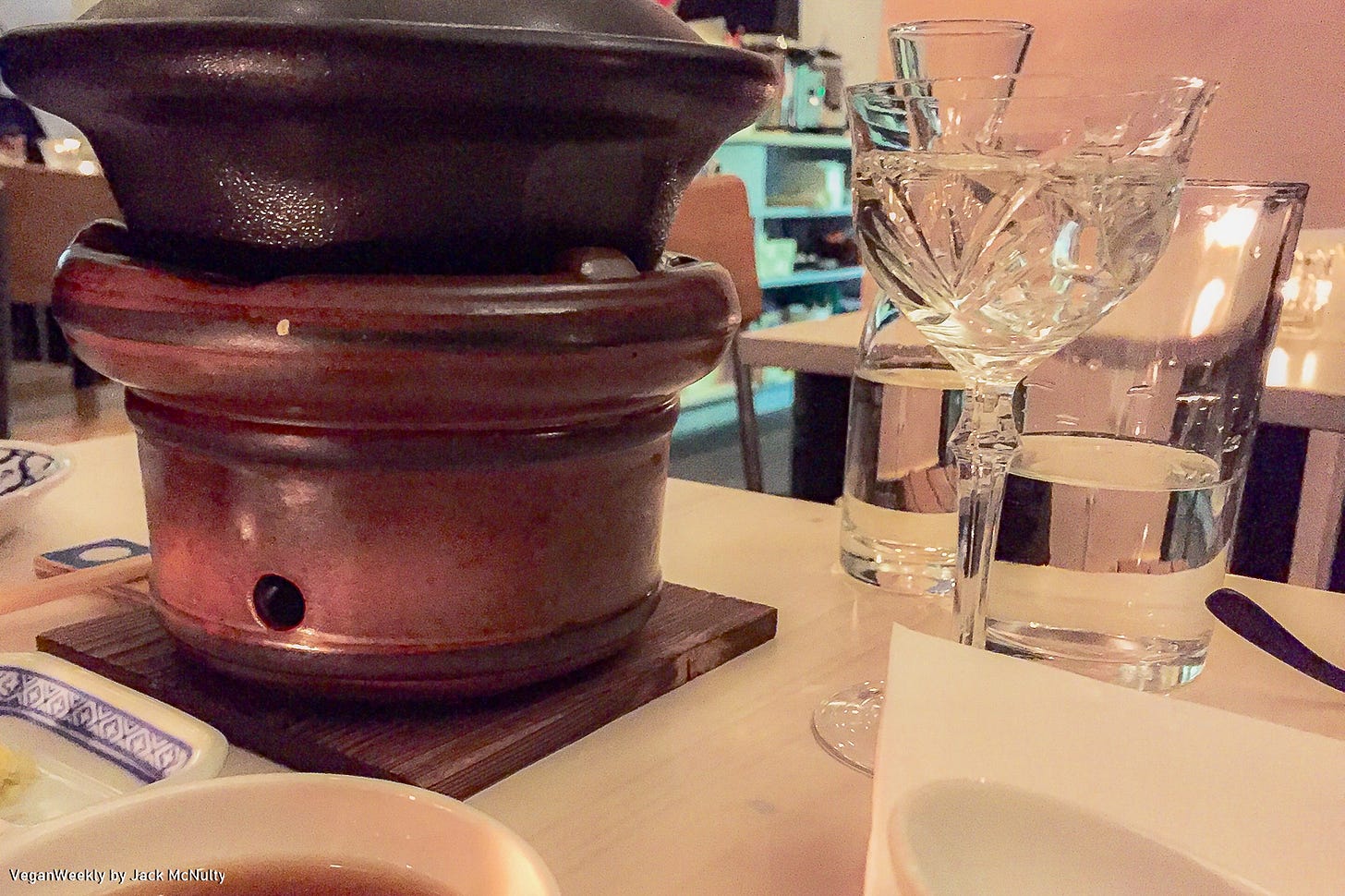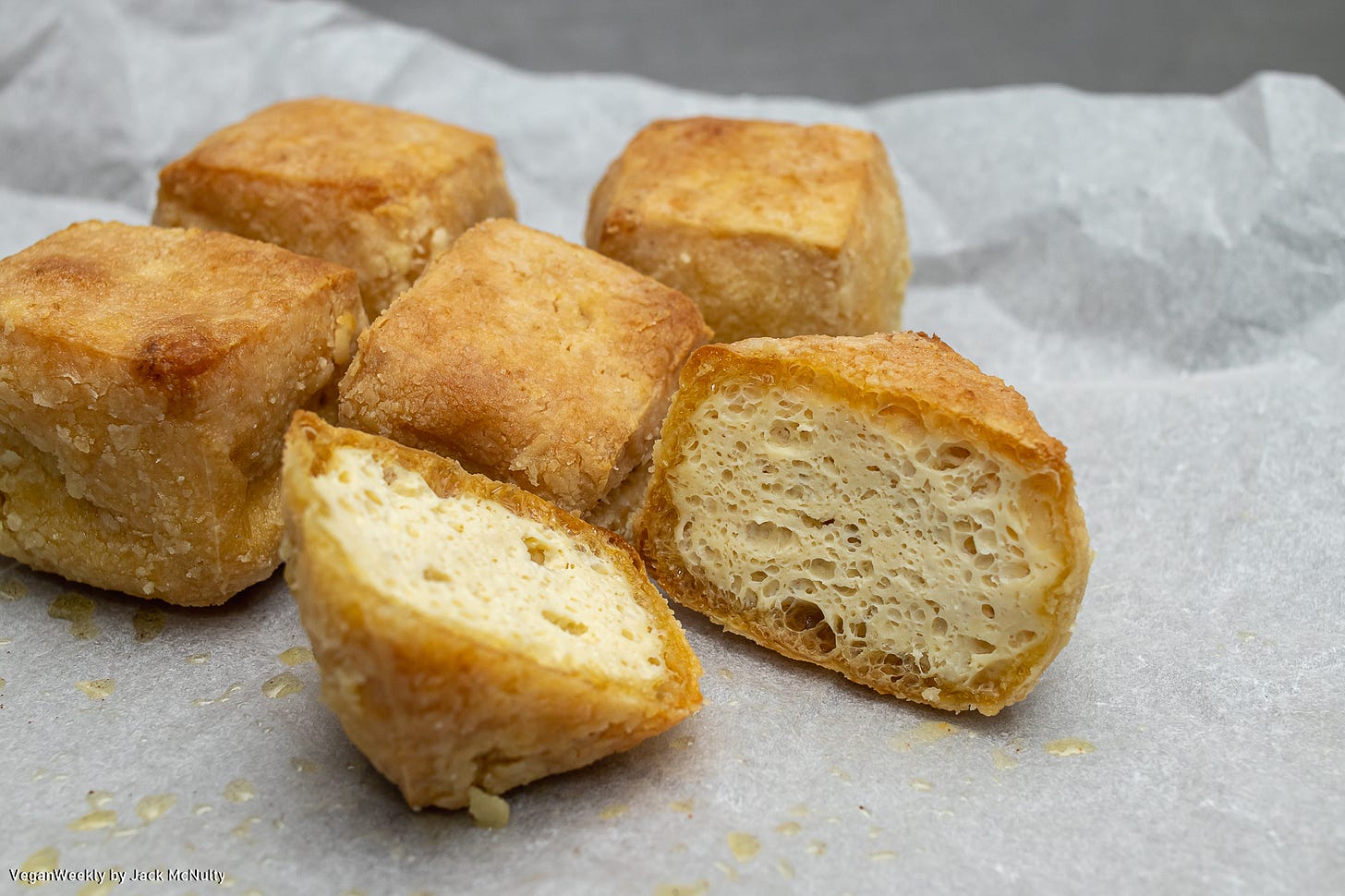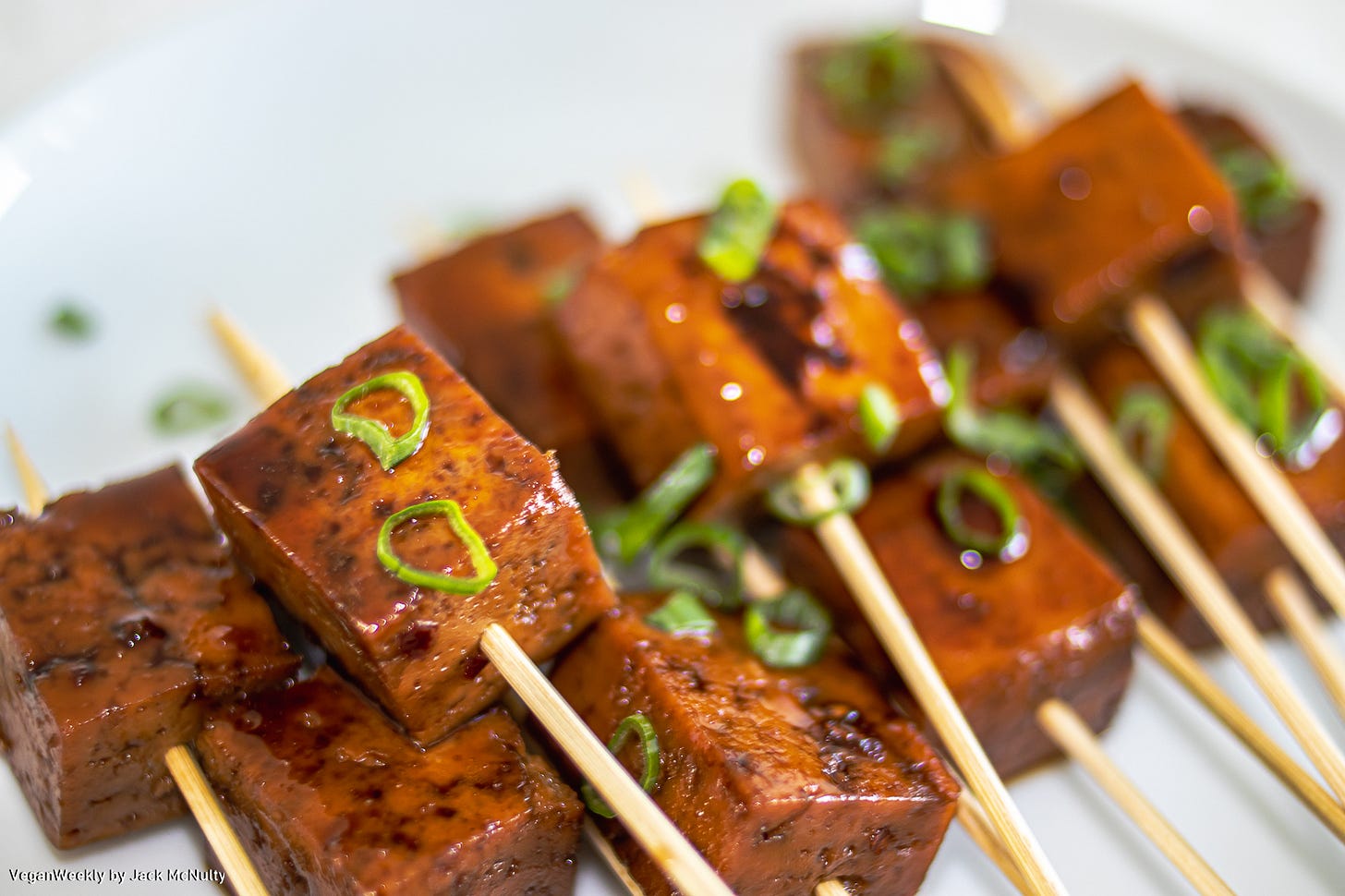Four Essential Ideas for Preparing and Cooking Firm Tofu
Tofu is often misrepresented on a plate - it doesn’t need to be that way. Learning a few preparation methods unlocks new potential for this healthy and affordable ingredient.
We sat at one of 12 or 13 small tables in the new Japanese izakaya restaurant. There was a certain buzz of curiosity in the air...a curiosity we shared because, like the others filling this small space, we were not sure what to expect from something so out of the ordinary from the Swiss restaurant scene.
We decided to begin our evening meal with a shared order of “fresh” tofu. I was skeptical...and also willing to give it a go. I didn’t expect what came next.
The server brought out a sort of mini set-up that seemed more appropriate for fondu than anything related to tofu. She lit the candle, placed a mini cauldron-like pot over the flame, added thick soy milk and a few drops of something from a vial she held, put the lid on the pot with her other hand, and set a timer for 15 minutes. We were instructed to wait until the timer went off. She would come to our table and remove the lid, and we could scoop out the “fresh” tofu onto our small plates and enjoy it with finely sliced scallions, chopped ginger, and a drop or two of their homemade soy sauce.
We waited...and wondered.
Ding. The timer went off, and the server appeared and removed the lid from the small pot as promised. And there it was – fresh tofu with a consistency similar to panna cotta. We eagerly scooped portions onto our plates, garnished them as instructed, and gave it a go. It was a revelation that completely changed my perspective of tofu...it was soft, slightly warm, and creamy. It tasted a bit sweet with mild bitter notes. It married perfectly with the sharpness of the ginger and scallions and the saltiness of the soy sauce. It was theatrical...and it delivered flavor and texture.
Unfortunately, this was not my typical tofu experience in restaurants.
At the other end of the spectrum, tofu may appear as an ingredient in some kind of vegan bowl offering with a medley of warm vegetables, sautéed mushrooms, and thin buckwheat noodles. The cold tofu contrasts strangely with the other warm ingredients. Sometimes the tofu is firm, sometimes semi-firm, but almost always, it is served as if it was only unwrapped and plopped on the plate as an afterthought. It is bland and chalky – not at all a pleasant dining experience.
This kind of tofu experience in restaurants seems standard…and that’s a shame because I know tofu can be so much more than a filler ingredient...or “beige blubber” as Nigel Slater once wrote.
I began to take tofu seriously when I embraced an entirely plant-based lifestyle. I wanted to understand every detail about tofu…including an understanding of how tofu is made. I wanted to recreate that “fresh” tofu experience in my kitchen.
My first step was to purchase an excellent book written and researched by
. The book, Asian Tofu, delivered all the details I was looking for and sent me on a quest to understand how to use tofu effectively in my recipes. I set out to master the essential jumping-off points, like selecting the right tofu for the dish I’m making, understanding various techniques to inject flavor into tofu, and using the correct cooking method to get the results I was looking for in the recipe I was creating.I haven’t mastered everything there is to know about tofu. Still, I feel comfortable using tofu in various ways to create flavorful dishes with interesting textures… that seems like a big step forward.
Selecting the Right Tofu
Tofu is sold in many different ways, frustratingly, without any labeling restrictions or guidelines. What factors separate firm tofu from semi-firm? What does pressed tofu mean? What is silken tofu…and why is it sometimes firm? These are important factors to consider when selecting tofu because how you proceed in a recipe to infuse flavor or cook the tofu depends on getting the right one.
Generally, the main classifications can be loosely labeled as Silken (includes firm and soft), Medium (also semi-firm), Firm, Extra-Firm, and Pressed. As Nguyen points out in her book, firmer textured tofu generally has more protein – so a glance at the label is usually helpful.
Another quick test can be done using your hand. Place your thumb and little finger together without squeezing them. The fleshy part of your hand – that bit of muscle between your index finger and thumb – indicates the relative softness of the protein. Using the little finger and thumb approximates a semi-soft tofu. Now advance with your ring finger, then the middle finger, and finally with your index finger – with each advancement, you should notice that muscle getting a bit firmer. The final bit approximates firm tofu…and with a squeeze, you should feel something like extra firm tofu.
Silken tofu has the highest water content and the softest texture. It works well in baked goods to create a custard-like texture. But silken tofu is not appropriate for baking, sautéing, grilling, or frying – these cooking methods need something in the semi-firm to firm category. I plan to cover more on working with silken tofu in a future edition.
Change the Texture
One of the main criticisms of tofu is its rubbery internal texture. I agree…this is a definite turnoff.
The rubbery texture is mainly caused when too much moisture is lost from the tofu’s interior. Starting with extra-firm tofu leaves very little room for error during the cooking process, which is why I recommend (in most cases) working with a semi-soft or firm style of tofu.
Many recipes call for pressing the tofu into cut-up cubes or larger pieces. Again, I’ve found this step unnecessary in most situations because too much moisture is pressed out of the interior of the tofu, causing it to turn rubbery when cooked. Patting the exterior of the tofu to remove surface moisture is a good idea – one I recommend for most recipes.
Salting is an interesting technique that is gaining popularity. The idea for pre-salting tofu is to allow osmosis to work its magic and force some of the water out of the tofu while replacing it with some salt solution. This method adds seasoning to the interior, but it also tightens the proteins on the surface and internally to help keep moisture loss during cooking to a minimum.
Rub the tofu with 1-2 tablespoons of salt and allow it to cure at room temperature for 30-45 minutes for a simple cure. Alternatively, create a warm salt bath by dissolving 2-3 tablespoons of salt in one liter of water. Add the tofu to the warm salt bath (or pour the hot salt water over the tofu) and allow the tofu to cure for 15-30 minutes. This method speeds up the osmosis process and allows the seasoning to deeply penetrate the tofu.
Be sure to remove any surface moisture from the tofu after using either salt curing method.
Freezing tofu is another simple and effective way to transform the texture. Frozen tofu becomes slightly firmer and more absorbent. Water molecules inside the tofu freeze and expand when frozen. When the tofu returns to room temperature, the ice crystals melt inside, leaving small cavities…or a sponge-like interior. Freezing tofu is an excellent option in stews, curries, and stir-fries. Like the salt-curing method, ensure all surface moisture is patted dry.
Infusing Flavor
The most obvious method for flavoring tofu is to marinate it for at least 30 minutes or overnight. Marinades can create a ton of flavor, but they can also work against you and cause tofu to caramelize too quickly. One way around this problem is to marinate the tofu, remove it and blot the surface moisture away. After cooking the tofu, it can be placed back into the marinade and allowed to take on more sauce. Alternatively, the marinade can be placed in a hot pan and reduced to a glaze before adding the tofu back to the marinade.
Freezing and thawing tofu (as described above) works great as a prelude to marinating.
Choosing the Right Cooking Method
Firm (or semi-firm) tofu is exceptionally versatile in how it can be cooked.
Any dry heat method, such as sautéing, baking (also broiling or oven grilling), grilling, pan-frying, or air-frying, can be used effectively to create varying degrees of crispy exteriors and soft interiors. For any of these methods, I recommend using the hot salted water curing method (described earlier) and ensuring the surface moisture is removed before cooking the tofu. Generally, higher direct heat methods (sautéing and grilling) produce the crispiest exteriors, while oven baking or broiling tend to produce acceptable but less crispy results.
Marinades can be used in any of these methods, but as mentioned earlier, removing the tofu and, drying the surface before cooking, then adding the cooked tofu back into the marinade is best.
Moist heat cooking techniques, like stewing, work well to produce flavor-rich recipes. Creating a spongy, absorbent interior by freezing the tofu first works exceptionally well. Hot, salted water curing also works – especially in creating textures similar to paneer.
Tofu Teriyaki
Tofu is a marvelous ingredient, despite its reputation for being a bland ingredient. Sure, on its own, tofu is flavorless, but its secret weapon is how it blends well with other elements, soaking up flavors from whatever environment surrounds it.
This recipe demonstrates how tofu can be transformed into a delicious, umami-rich dish. Marinating the tofu for a minimum of 30 minutes allows flavors to soak right into the tofu. The sautéing is executed in a dry pan to caramelize the exterior sugars and create flavor and texture…without adding unnecessary fat to the tofu. Finally, the remaining marinade is reduced to a concentrated glaze. The cooked tofu sits in this delicious glaze for another 30-60 minutes to infuse even more flavor.
Serve tofu teriyaki on skewers with steamed rice or in a stir-fry creation.
Difficulty: simple
Yield: makes about 4-6 servings
Ingredients
300 grams (10 ½ ounces) of firm tofu, cut into 3 cm pieces
45 grams (3 tablespoons) of tamari or soy sauce
2 tablespoons mirin
1 large tablespoon brown rice vinegar
2 tablespoons maple syrup
60 ml (1/4 cup) water
Sea salt to season
chili flakes to taste
Method
Begin by marinating the tofu. Combine the tamari or soy sauce, mirin, brown rice vinegar, maple syrup, water, and seasoning in a wide and shallow dish large enough for a single layer of tofu. Be cautious with the salt in the marinade – it should be on the light side because the sauce will reduce to a concentrated glaze. Add the tofu pieces and marinade for 30-60 minutes. Remove the tofu to a clean plate, reserving the marinade to create a glaze.
Heat a large non-stick pan over medium heat. Add the tofu once the pan is hot (work in batches if necessary to prevent overcrowding) and increase the temperature to medium-high. Turn the tofu after a minute – they should be lightly colored on the cooked side. Cook for another minute. Remove the cooked tofu to a clean plate while cooking the remaining pieces.
Return the cooked tofu to the hot pan and add the leftover marinade. Cook over medium-high heat until the marinade thickens into a semi-thick glaze. Remove the pan from the heat, toss the tofu well in the glaze, and serve hot with steamed rice and some steamed vegetables if you like.
Tips and Variations
You can also make the same recipe using tempeh slices instead of tofu. The result will be similar… just a bit heartier.
Gluten-free variation - I prefer using a lite soy sauce when making this recipe but go ahead and use what you have. Using tamari makes this recipe gluten-free.
The mirin adds a touch of sweetness to the tofu. Use plain sake or even white wine if you do not have any mirin in your pantry.
Brown rice vinegar is my favorite. Alternatives could include white wine vinegar, apple vinegar, Chinese black rice vinegar, or even balsamic vinegar.
I use maple syrup as the sweetening agent…feel free to use honey (the traditional method) if you’re on that side of the vegan fence.

